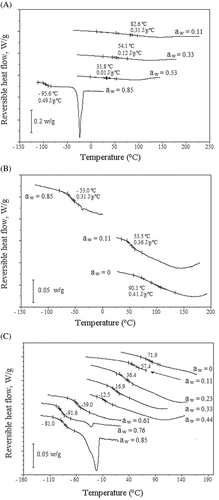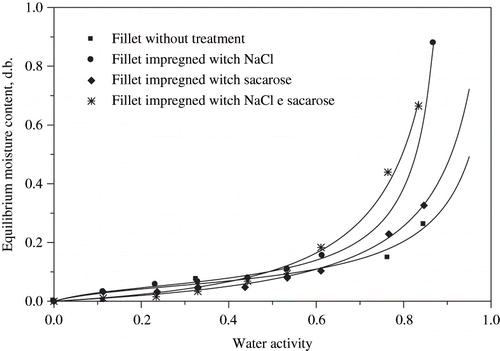Figures & data
Figure 1 The kinetics of the sodium chloride (NaCl) and sucrose contents of tilapia fillets during osmotic dehydration using binary solutions of NaCl and sucrose or ternary solutions (NaCl-water-sucrose). w.b. = wet basis.
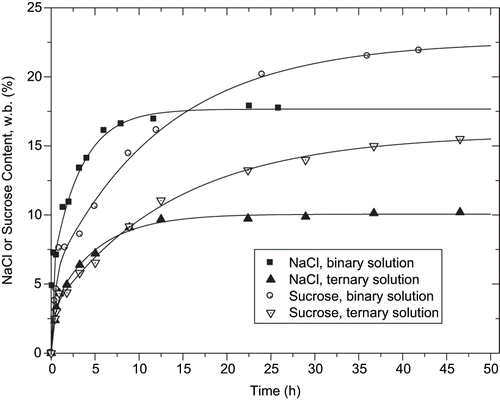
Figure 2 (A) DSC thermograms of tilapia muscle with different sodium chloride contents; (B) DSC thermograms of tilapia muscle with different sucrose contents; and (C) DSC thermogram of tilapia muscle with different NaCl and sucrose contents. Exothermal heat flow up.
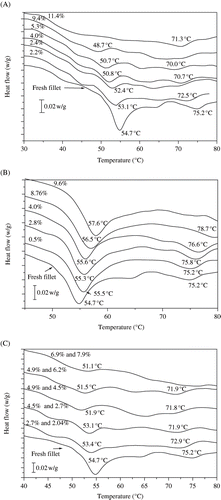
Table 1 Denaturation temperature (Td) and enthalpy (ΔH) of tilapia fillets after different impregnation treatments, measured by DSC
Table 2 GAB parameters for Tilapia fillet
Figure 4 (A) Thermograms of fresh and osmotically dehydrated tilapia fillets in different solutions at aw= 0.11; and (B) thermograms of fresh and osmotically dehydrated tilapia fillets in different solutions at aw= 0.85. Exothermal heat flow up.
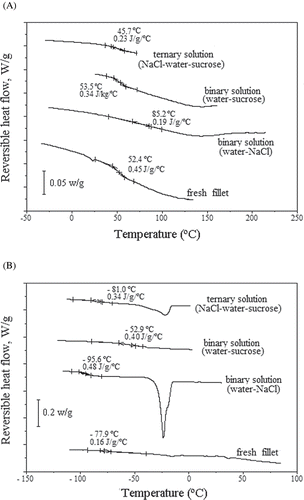
Figure 5 (A) Thermograms of osmotically dehydrated tilapia fillets in aqueous NaCl solutions at different aw values; (B) thermograms of osmotically dehydrated tilapia fillets in aqueous sucrose solutions at different aw values; and (C) thermograms of osmotically dehydrated tilapia fillets in ternary solutions (NaCl-water-sucrose). Exothermal heat flow up.
